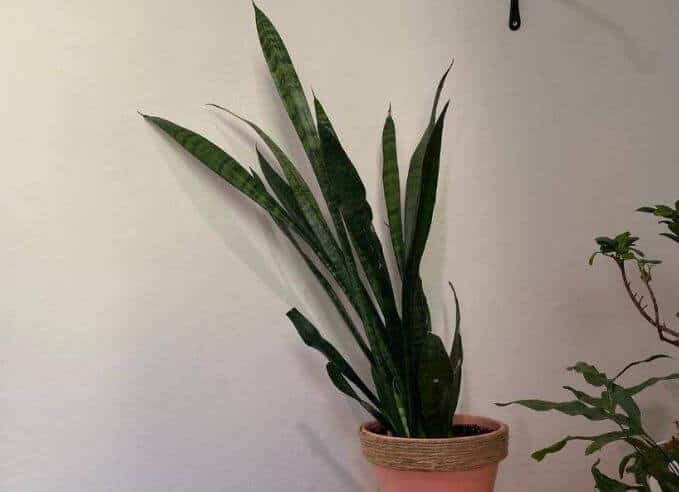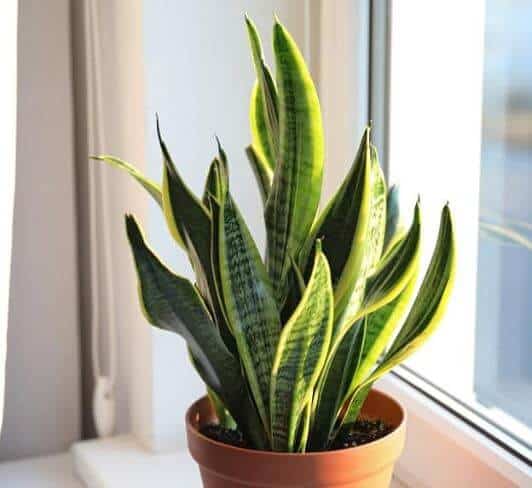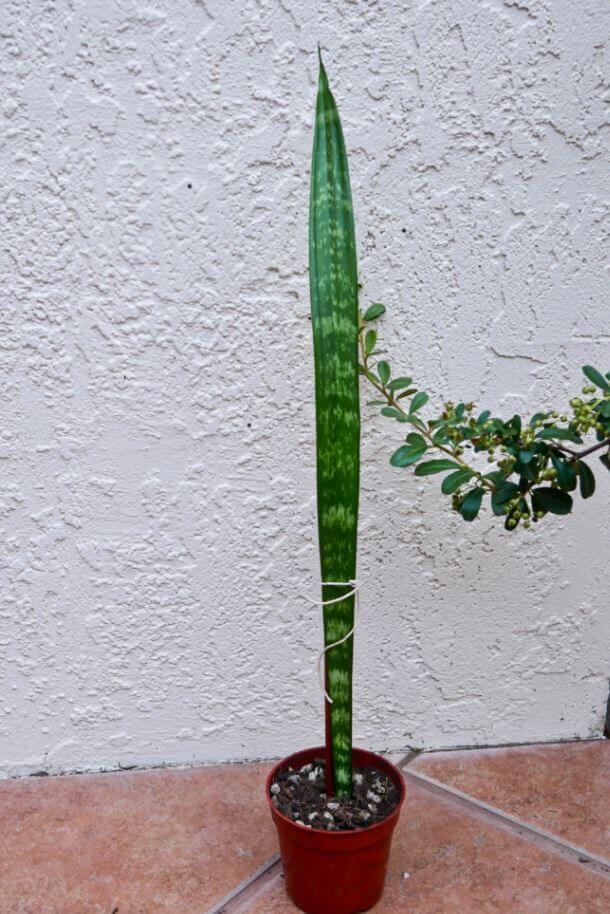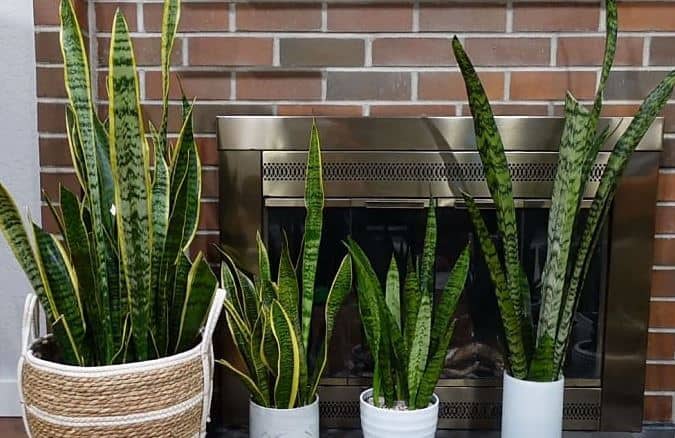Last Updated on January 16, 2023 by a Friendly Gardener
Once known botanically as the Sansevieria trifasciata, the Snake plant is now classified as the Dracaena trifasciata thanks to all the things it has in common with the Dracaena species. Stiff sword-shaped foliage distinguishes this plant and leaves can be a mere six inches or grow to heights of eight feet. These leaves are what make these plants popular, so when they behave erratically, it’s noticeable.
Lots of snake plants, at some point, stop growing straight up. Even if your snake plant has grown to be quite tall, it may lean sideways. Snake plants with their sculptural quality are beautiful when they grow upward. Unfortunately, environmental conditions can cause a plant to lean, slant, or spread.
When left without intervention, your plant can develop an unattractive appearance. You may be left wondering why is my plant leaning to one side and what can I do about it.
The principal reason that snake plants lean to one side or slant is that they are moving in the direction of a light source. This will be the case especially if your plant is getting light specifically from one direction. It will continue to grow in that direction. Overcrowding your plants can also be the cause of unusual growth as well as containers that are too small for the plant’s root system.
Snake Plant Growing Outwards or Fanning

While snake plants will not always grow in straight lines, if they begin to fan out, something is off with their environment. This can be due to overwatering, a drop in temperature to below 55°F, underwatering, a small pot, or too little environmental light. A Snake plant spreading out indicates that care is somehow inadequate.
Check the environmental conditions and make any necessary adjustments.
How to Keep Snake Plants Straight

Uneven Light
Although snake plants adapt well to low light conditions, if light exposure is uneven, the plant’s growth will follow the light source. It will lean in the direction where it can receive the greatest amount of light. This is the most common reason that a snake plant will not grow in a straight upward direction.
What to Do
If your plant appears to grow one-sided, try rotating it. Rotating is the best technique for even growth. Ideally, rotate when the sun rises. If your plant is leaning to the left, rotate it to the right. Rotation will help your plant grow straight up. Avoid leaving it in one position for too long, as this will merely stimulate the plant to grow in that direction. To protect your plant, turn it gradually at the base.
Overwatering
Overwatering can cause a snake plant to slant to the side where there is less soil in the container. This is a common error for indoor gardeners. An excess of plant parenting can cause us to overwater. Water will settle in the soil bed weighing it down so that it sinks somewhat. Your plant will lean to the side where the soil sinks.
What to Do

The best thing that you can do for your plant is monitor how much water it needs and how much you are giving it. Consider using a moisture meter if you have doubts. Remember that Snake plants are succulents meaning they will store some water and can survive a bit of drought or a forgotten watering without permanent damage.
You can water your plant with a spray bottle for more even watering than using a stream of water that may penetrate one side more than the other. This can help your plant to grow straighter.
Improper Container Size
If the plant’s pot is too small, the root system will end up being crowded. As a result, your snake plant will grow to the side of the pot where there is less resistance, causing it to slant eventually.
What to Do
It’s time to repot your plant! Snake plants do like smaller containers, but if the container is too small, your plant will quickly become rootbound. As a result, the plant may lean and even begin to shrivel somewhat. Select a larger pot to give your plant a bit more space to grow in.
More Tools to Get a Snake Plant to Grow Straight Up

Stakes
Stakes are a great tool to help indoor plants achieve a sturdy, upright appearance. Stakes are the ultimate tool to use as support by simply inserting them in the soil bed. Staking plants can give them stability while keeping them upright.
If you opt to stake your snake plant, make sure the stake you select can manage to hold the weight of the plant without bending or breaking. Stakes should be made of strong materials such as bamboo, metal, or wood. Stakes are an inexpensive option and should last for quite some time.
Ties

You can also use string or rubber bands to tie a snake plant’s leaves to hold them in place until they grow straight which can take up to a month. Tying the foliage will not permit your plant to lean and encourage the snake plant to grow upright. A tie should be neither tight nor loose. A tight string can harm the plant’s foliage while a loose tie will not keep the plant’s foliage straight.
Remove the ties after a month’s time to see if your plant is growing straight. If it is, just remove the tie and enjoy your plant. If not, begin the tying process anew.
Space
Snake plants need enough space to grow upward, so don’t position them in a spot where there is none. These plants love to grow straight up and tall. If it doesn’t have adequate room to grow upwards, it will begin to grow to the side.
Pruning
If you have attempted to straighten your plant and it is still leaning, you may want to prune the plant. This will remove some of the weight. Trim leaves that already face downward.
Obstacles, like furniture, need to be removed if they are causing our plant to grow in a specific direction.
A Final Thought
Snake plants are well-loved for their easy-care requirements even if environmental conditions are not optimal. With a little extra attention, you’ll have your Snake plant growing straight up in no time.

